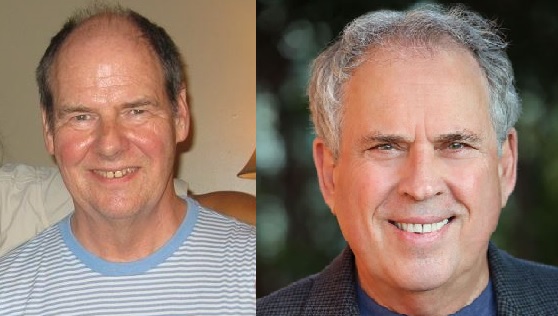Almost three years ago, our friend and attorney Scott Pilutik wrote an article for Forbes describing the unique position “independent” Scientologists are in when it comes to challenging the Church of Scientology on its trademarks and its tax exempt status.
Almost since the very beginning of Dianetics and Scientology, there have been people who splintered off to use L. Ron Hubbard’s ideas on their own, outside the official church. More often than not, that put them directly in the crosshairs of Hubbard and his “ethics” system, a complex apparatus of surveillance and harassment which he came up with to deal with defectors who dared to “audit” outside his control.
But if independent Scientologists have had to put up with years of harassment, they’re also in a special position to challenge Scientology’s monopoly of Hubbard’s ideas by forming their own church, Pilutik explained.
If an Independent Scientology entity were to emerge, on what bases might a legal challenge to the IRS-Scientology Agreement be mounted? One area in which the Church of Scientology is particularly susceptible to challenge by Independent Scientology is the potential generification of its popular trademarks (think what happened to “zipper,” “aspirin,” “escalator,” et al.), such as “Scientology,” “Dianetics,” and “e-meter.” David Mayo, in the creation of his [1980s] Scientology offshoot, carefully avoided infringing on Scientology’s trademarks by designing a parallel lexicon for use in his church. But he shouldn’t have had to endure this free exercise hardship at all, because the term Scientology, for instance, has ceased to be distinctive by its attaining “secondary meaning” through non-organized Scientology channels. For a court to uphold the enforcement of Scientology’s trademarks against a hypothetical competing Independent Scientology entity, then, it would necessarily trample on that entity’s own free exercise rights, not to mention its becoming impermissibly entangled in a religious dispute. Such a suit would likely be triggered simply by advertising, say, “Scientology auditing.”
Pilutik is referring to the “free exercise” of religion that’s guaranteed by the US Constitution: If someone started a new church that offered auditing as described by L. Ron Hubbard, it ought to be able to do so freely. And it could also call itself “Scientology” — but not without a fight, and one that might drag in the Church of Scientology’s special deal with the IRS.
It’s a tantalizing scenario. But Pilutik went on to observe that so far, no one in the “indie” field seemed interested in taking this step.
Until now.
A group of independent Scientologists calling themselves the Religious Liberty League has announced that they are forming the First Independent Church of Scientology (FICOS), and they have applied for a trademark for that name.
Pilutik tells us that the Church of Scientology will have no choice but to legally challenge that trademark application, and then things should get very interesting.
As the League indicated on its website, the trademark for “First Independent Church of Scientology” was applied for on November 12, and in the name of James R. Fonda.
At Mike Rinder’s blog a couple of years ago, Jim Fonda described his career in the Church of Scientology and his disaffection, following the path of so many people who have left the church in recent years. He first got into Scientology at the Stevens Creek mission in 1975, and plowed through to OT 7 by 1981, but then, after a period of disillusionment, he resigned from the church in 2001. Since then, he’s turned to other independents for auditing and has been encouraged by his results.
Both Fonda and the man behind the Religious Liberty League website, Merrell Vannier, declined to talk to the Underground Bunker about the First Independent Church of Scientology.
We found that surprising, especially considering how bold and outspoken Vannier is at the League site, where he announced the trademark application and also explained that the League will be asking the Church of Scientology to make major changes in its governance, including asking David Miscavige to step down as leader.
It’s not really clear how the fledgling new church, which doesn’t exist yet outside a trademark application and a blog post, will find itself in the position to demand major changes from the multi-billion-dollar Church of Scientology. But that becomes a little less surprising if you know something about the person making those demands.
Vannier is a fascinating figure. We wrote at length about his background in the church when we reviewed his 2015 book, Arrows in the Dark. In the 1970s, Vannier was a spy for Scientology’s notorious Guardian’s Office, and he was also a lawyer. At one point, he was hired to be the attorney for Clearwater mayor Gabe Cazares, who was suing the Church of Scientology for libel — Cazares had no idea that the attorney he’d just hired was actually a Scientology spy. In his book, Vannier describes how he used that position, as attorney to Cazares, to pull off a number of operations for Scientology, including a scheme to kill some anti-cult legislation in Congress. (As we said in our review, we were grateful that Vannier came forward with these sordid tales of his spy activities for the church. But the book also claims that David Miscavige is an FBI plant, inserted to bring down Scientology in a long game played by the government, which is envious or frightened by the genius of L. Ron Hubbard, or something. It’s a book long on speculation and short on evidence.)
After the FBI raided Scientology in 1977, Vannier’s schemes were eventually discovered. The Florida Bar disbarred Vannier…
[Vannier’s] argument is that an attorney, who engages in unethical conduct on behalf of an organization that labels itself a church, has a First Amendment right to immunity from disciplinary proceedings. This idea is repugnant to the principles of the Constitution and the ethical standards of the legal profession….Not only did Merrell Vannier act in conflict with his client’s interests, his conduct in this matter is a perversion of his Oath and a defilement of the standards of our profession.
(Vannier tells us he could have reapplied to the Bar after his disbarment, but chose not to.) Vannier remained an ardent member of the Church of Scientology after his disbarment, but he describes in his book that he was ultimately “declared” a “suppressive person” in 2012 — the church’s equivalent of excommunication — and his daughter, who remains in the Sea Org, disconnected from him.
For years, Vannier has run a website, Save Scientology, which argued that L. Ron Hubbard, before his death, had intended for the church, through a corporate reorganization, to become more democratic and operate with more “checks and balances.” That reorganization, which was completed in 1981 and 1982, created multiple corporate entities like the Church of Spiritual Technology (CST), the Religious Technology Center (RTC) and the Church of Scientology International (CSI), each with multiple boards of trustees and directors. Vannier believes that Hubbard intended this to create an organization that would not be run by a dictator like David Miscavige. Through the Save Scientology website, Vannier called for those trustees and directors to identify themselves and vote Miscavige out of leadership.
Before her death, Denise Brennan told us, however, that the people who thought Hubbard had created the corporate reorganization to make Scientology more democratic were kidding themselves. Brennan took part in the corporate sort-out, and she told us there was no doubt why Hubbard wanted it done — simply to make it more difficult to get to him and his assets.
“That goose chase you’re on — that’s what we tried to make people do, lead them to follow that paper trail and think they were on to something. The people who think they’re following the power of control by looking at the lists of directors for CST are falling for the sham we set up,” Brennan told us for a story in 2013. “All of the corporate papers and layers of directors — it’s all just a scam that has nothing to do with who really runs Scientology. Who runs Scientology is David Miscavige, and he controls it through the Sea Organization.”
One of the things we wanted to ask Vannier was why he’s brought that quixotic fight from Save Scientology to his new venture, the First Independent Church of Scientology, which already has its hands full getting some momentum going and fighting a trademark battle. Perhaps he’ll answer that question in the Liberty League’s blog.
Pilutik told us he had the same concern.
Regarding the trademark fight, I think they have a shot. But I also think they’ve bitten off (a ton) more than they can chew by making demands about the official church’s corporate structure. The key to successfully litigating anything when the Church of Scientology is on the other side of the table is to keep the battle focused and discrete. The Church of Scientology, especially when vulnerable on an issue, enlarges the playing field, forcing the other side to spend and defend ancillary issues.
The CST issue identified by FICOS is far from being a legal problem, whereas the trademark application is more or less self-contained by the administrative process. The Church of Scientology is undoubtedly aware of the application and will file a formal opposition, which will then likely force a trial before the Trademark Trials & Appeals Board (which can include discovery). Luckily for FICOS the TTAB is a court (really, an administrative body) of limited jurisdiction, so the Church of Scientology can’t enlarge the case there. So the Church of Scientology would be eager at that point (or after, relating to a possible appeal) to drag FICOS into other courts on related issues.
So if FICOS can keep the playing field limited to the First Amendment and its free exercise right to use the generic term “Scientology” in commerce, they stand a good chance of prevailing, I believe. But if they invite lawfare on side issues, they’ll find themselves drowning in paper.
The First Independent Church of Scientology has a really interesting chance to become a major headache for Miscavige, if it can stay focused on what’s really possible. We’ll be watching what happens.
——————–
Is Scientology really this tone-deaf?
We want to be very clear and say at the outset that the tip we received which we’re about to relay to you is unconfirmed. But it’s so fun, we just knew we’d have to share it with you.
Our tipster told us they could hardly believe it when they found out, but they were told that “Gold is doing a film on brainwashing so they have created a set to look like North Korea.”
Yes, we expect your jaw is hitting the floor about as hard as ours did. We only hope that it’s true. Please, Dave, put out a new ad or training film where you talk about brainwashing and use Kim Jong-un’s cult-country as the backdrop. Seriously, we’re begging here.
——————–
Bonus photos from our tipsters
People of San Francisco, you will be getting pamphlets as the Super Bowl nears. Oh joy.
Scientology’s Ham Hock poses for a new book cover.
With Alfreddie Johnson’s World Literacy Crusade down the tubes, does this present an opportunity for another Scientology shill, Watts Bishop Franklin Harris, making the scene here at the Portland org, to move up the food chain?
——————–
 Posted by Tony Ortega on February 1, 2016 at 07:00
Posted by Tony Ortega on February 1, 2016 at 07:00
E-mail tips and story ideas to tonyo94 AT gmail DOT com or follow us on Twitter. We post behind-the-scenes updates at our Facebook author page. After every new story we send out an alert to our e-mail list and our FB page.
Our book, The Unbreakable Miss Lovely: How the Church of Scientology tried to destroy Paulette Cooper, is on sale at Amazon in paperback and Kindle editions. We’ve posted photographs of Paulette and scenes from her life at a separate location. Reader Sookie put together a complete index. More information about the book, and our 2015 book tour, can also be found at the book’s dedicated page.
Learn about Scientology with our numerous series with experts…
BLOGGING DIANETICS: We read Scientology’s founding text cover to cover with the help of L.A. attorney and former church member Vance Woodward
UP THE BRIDGE: Claire Headley and Bruce Hines train us as Scientologists
GETTING OUR ETHICS IN: Jefferson Hawkins explains Scientology’s system of justice
SCIENTOLOGY MYTHBUSTING: Historian Jon Atack discusses key Scientology concepts
Other links: Shelly Miscavige, ten years gone | The Lisa McPherson story told in real time | The Cathriona White stories | The Leah Remini ‘Knowledge Reports’ | Hear audio of a Scientology excommunication | Scientology’s little day care of horrors | Whatever happened to Steve Fishman? | Felony charges for Scientology’s drug rehab scam | Why Scientology digs bomb-proof vaults in the desert | PZ Myers reads L. Ron Hubbard’s “A History of Man” | Scientology’s Master Spies | Scientology’s Private Dancer | The mystery of the richest Scientologist and his wayward sons | Scientology’s shocking mistreatment of the mentally ill | Scientology boasts about assistance from Google | The Underground Bunker’s Official Theme Song | The Underground Bunker FAQ
Our Guide to Alex Gibney’s film ‘Going Clear,’ and our pages about its principal figures…
Jason Beghe | Tom DeVocht | Sara Goldberg | Paul Haggis | Mark “Marty” Rathbun | Mike Rinder | Spanky Taylor | Hana Whitfield










